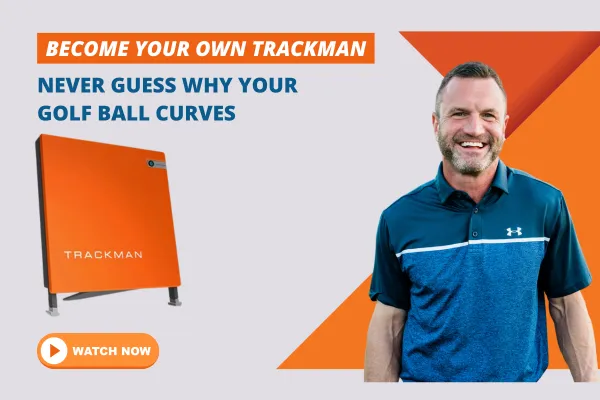
Master Golf Ball Flight: Become Your Own Trackman
Become Your Own Personal Trackman
Tired of guessing why your golf ball flies like it does? It’s time to ditch the guesswork and unlock the science behind your swing. In this blog, you’ll learn how to diagnose your golf shots like a pro, using the same principles that power advanced launch monitors like Trackman—no expensive equipment required. By understanding golf ball flight physics, you’ll become your own Trackman, capable of analyzing every shot and making targeted improvements to your game.
Hi friends and golfers. My name is coach Erik Schjolberg, founder and owner of EJS Golf, the Science of Better Golf. You can find me teaching live at McCormick Ranch golf course located in Scottsdale, AZ. Having coached thousands of lessons over the past 25 years plus, I have learned that the more golfers focus on data and what is real vs. feels or imagined, the better they get. This is a super important topic that you are going to read and learn about today.
The Science Behind Your Swing: Understanding the D-Plane
Every golf shot hinges on a critical concept called the D-Plane. This is the "moment of truth" at impact, where physics determines your ball’s fate. Mastering the D-Plane is your first step to better golf.
What is the D-Plane?
The D-Plane is a three-dimensional plane formed by two key factors at impact:
Club Path: The direction your club head moves (horizontal and vertical).
Face Angle: The direction your club face points (horizontal and vertical).
Picture two alignment sticks: one for the club path, the other for the face angle. The plane connecting them—the D-Plane—controls:
The ball’s initial launch direction.
Its spin axis tilt (which causes curvature).
The backspin rate.
Understanding this plane lets you decode what happens when club meets ball.
How Club Path and Face Angle Affect Your Shot
Club Path: A leftward path (out-to-in) or rightward path (in-to-out) shapes your swing’s direction.
Face Angle: A closed face (left) or open face (right) sets the ball’s starting line.
The interplay between these factors—known as face-to-path—is what makes your shot fly straight, fade, or draw.
Decoding Ball Flight: Start Direction and Curvature
Every shot tells a story through two clues: where it starts and how it curves. Here’s how to read them.
Why the Club Face Determines Start Direction
Old myths said swing path ruled start direction. Science proves otherwise: face angle is king.
For irons, it drives about 75% of the starting line.
For drivers, it’s 85%.
If your ball starts left, your face was closed. If it starts right, it was open. It’s that simple.
Key Takeaway: Start direction reveals your face angle at impact.
How Spin Axis Causes the Ball to Curve
Curvature comes from the spin axis—the tilt of the ball’s rotation. There’s no "sidespin," just a single axis that tilts:
Negative spin axis: Curves left (draw/hook for right-handers).
Positive spin axis: Curves right (fade/slice).
Zero spin axis: Flies straight.
The tilt depends on face-to-path:
Face closed to path = left curve.
Face open to path = right curve.
The bigger the difference, the sharper the curve.
Key Takeaway: Curvature shows the relationship between face angle and club path.
Diagnosing Your Shots: A Step-by-Step Guide
With start direction and curvature, you can diagnose any shot like a pro. Follow these steps:
Check the start direction: This shows your face angle.
Watch the curve: This reveals your face-to-path.
Deduce the club path: Combine the two to pinpoint your swing path.
Here’s how it applies to common shots:
Common Shot Patterns and What They Mean
Straight Pull (Starts Left, Stays Left)
Face Angle: Closed (left).
Curvature: None (face-to-path near zero).
Club Path: Out-to-in, matching the face.
Diagnosis: A squared-up outside swing.
Straight Push (Starts Right, Stays Right)
Face Angle: Open (right).
Curvature: None (face-to-path near zero).
Club Path: In-to-out, matching the face.
Diagnosis: A squared-up inside swing.
Pull Fade / Cut (Starts Left, Curves Right)
Face Angle: Closed.
Curvature: Right (positive face-to-path).
Club Path: Further left than the face.
Diagnosis: Outside-in with an open face relative to path.
Push Draw / Draw (Starts Right, Curves Left)
Face Angle: Open.
Curvature: Left (negative face-to-path).
Club Path: Further right than the face.
Diagnosis: Inside-out with a closed face relative to path.
Slice (Starts Right or Center, Curves Hard Right)
Face Angle: Open or neutral.
Curvature: Sharp right (large positive face-to-path).
Club Path: Often far left.
Diagnosis: Open face meets outside-in path.
Hook (Starts Left or Center, Curves Hard Left)
Face Angle: Closed or neutral.
Curvature: Sharp left (large negative face-to-path).
Club Path: Often far right.
Diagnosis: Closed face meets inside-out path.
Taking Action: From Diagnosis to Improvement
Diagnosis is only half the battle—now fix it.
Simple Adjustments for Beginners
Ball Position: Back for out-to-in; forward for in-to-out.
Setup: Closed shoulders for out-to-in; open for in-to-out.
Swing Thought: Swing to “right field” (out-to-in) or “left field” (in-to-out).
Advanced Techniques for Seasoned Golfers
Face Control: Drill opening or closing the face.
Path Adjustment: Shallowing or pivoting to tweak path.
Focus on impact first, then trace the swing flaw back to its source.
Conclusion
You don’t need a launch monitor to master your swing—just the ball flight laws. Start direction shows your face angle; curvature reveals your face-to-path. With practice, you’ll diagnose shots like a pro and improve with precision.
Ready to level up? Watch your next shot, ask “Where did it start? How did it curve?”, and start fixing your game today!
Read more of my blogs and go to my YouTube channel for a further understanding
(480) 861-9370
